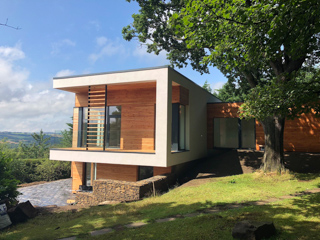To ensure that the construction sector makes its important contribution to the 2020 targets — a 20% improvement in energy efficiency, 20% renewables and a 20% cut in greenhouse gas emissions by 2020 — the European Commission issued the European Performance of Buildings Directive (EPBD) 2010/31/EU, recast 2010, and a Delegated Act providing further details. In these documents, common requirements are defined that the Member States must meet with national legislation: Building code requirements must comply with the so-called “nearly-Zero Energy Buildings” (nZEB) requirement, entering into force from 31.12.2018 for public buildings and from 31.12.2020 for all other buildings.

But what exactly is an nZEB?
There is a core definition of characteristics in the EPBD and Delegated Act that national regulations are supposed to meet. The most significant are:
1. Very high energy efficiency / nearly-zero energy demand;
2. Cost-optimal levels of energy efficiency from a life cycle perspective;
3. Very significant contribution from renewable energy sources (RES) produced on-site or nearby.
Is there an nZEB- standard?
There is no such thing as an “nZEB-standard”, as each Member State is responsible for its own building codes. There will probably never be such a thing as a comprehensive European “nZEB-standard”: Every Member State will adhere to its own idea of improved building standards using its own rationale and interpretation of the EPBD definitions and local practices. Comparisons between buildings in different Member States will therefore remain challenging.
Here is where Passive House comes into play:
The Passive House Standard is a clearly defined building performance standard, with precise criteria based on sound scientific evidence. Moreover, the Passive House Standard embodies an existing, supra-national, tried and tested implementation of the nZEB definitions, which ticks all the boxes:
- It is highly energy-efficient / has a nearly-zero energy demand
- The energy efficiency level is cost-optimal from a life cycle perspective
- Renewable Energy Sources (RES) on-site or nearby can make a significant contribution.
The latter may be obvious for any Passive House premium or plus, but any Passive House classic with a heat pump uses renewable energy from on-site too. Moreover, in many cases owners can source local renewable energy to meet their electricity needs.

In conclusion, it can be said that the Passive House Standard offers a proven implementation of the nZEB with over 25 years of experience. It can be applied to any climate. Design tools, training and quality assurance are available to help ensure reliable performance –thus avoiding any “performance gaps”. The standard is public and available for anyone to use free of charge. We hope that one day, the Passive House Standard will gain official recognition throughout the European Union as one universally accepted pathway to nZEB.






 Carl supports our international communication activities and is the point of contact for administrative enquiries.
Carl supports our international communication activities and is the point of contact for administrative enquiries.
THANKS FOR SHARING SUCH USE FOR INFORMATION ABOUT PASSIVE HOUSE